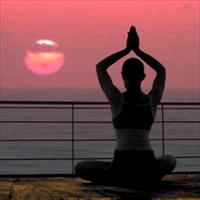Yoga Styles: Guide To The Most Popular Types

The image of yoga has changed during the past years. If once, the first picture that popped your mind was of a group of white wearing weirdoes standing on their heads and breathing loudly, now you are probably thinking about Madonna's well shaped arms. Currently, yoga is one of the most popular fitness activities worldwide. One of its appeal is that it can be practiced by elders and it can improve the overall physical fitness of athletes.
If you want to start practicing yoga, here is a quick guide to the basic types of yoga. While most of them are based on the same ancient postures, each yoga style has a different focus. Some of the yoga styles focus on strengthening the body while others focus on flexibility. Other types of yoga focus mainly on breathing, relaxation, and meditation.
Most of the yoga styles that were adopted in the west, were derived from the Hatha Yoga, which is a general term that refers to the physical branches of the ancient Indian philosophy. The purpose of the traditional Hatha Yoga was to achieve balance between mind and body through moral discipline and physical exercises, which are expressed by a series of asana: postures, panorama: breathing and meditation.
Western culture adopted mainly the physical aspects of the Hatha Yoga and ignored the moral aspects, usually even the breathing and meditations aspects. All the yoga styles that were derived from the Hatha Yoga share the same basic principle that mental balance can be achieved through practice of physical exercises and postures. Each yoga style chooses to focus on different aspect.
Ashtanga Yoga:
This focuses on the flow of postures in order to improve strength, stamina and flexibility of the body. During a Asthanga Yoga class, the participants jump from one posture to another. Therefore, this type of yoga is not the ideal for beginners. People who are not well fit may find it too difficult and demanding. However, if you are interested in improving your strength, flexibility and stamina and you are fit enough to deal with an hour of jumping from one posture to another, Asthanga Yoga can suit you.
Power Yoga:
This is an American development of the Asthanga Yoga that also adopted several elements from other types of yoga styles. You can find Power Yoga classes mainly in fitness and health clubs. Power Yoga focuses on strengthening the body by performing Hatha Yoga postures for a longer time to improve both physical flexibility and mental focus. Power Yoga can be a good exercise for athletes, people who practice types of fitness activities and people who want to tone their body.
Bikram Yoga:
A Bikram Yoga class features a series of 26 Hatha Yoga postures practiced in a heated room. It is also known as Hot Yoga. The purpose of the heat is to allow the participants to get into each of the yoga poses in a deeper and safer manner. The heat also helps clean the body from toxins promoting sweating. Bikram Yoga focuses more on the workout of the entire body, including the internal organs and less on flexibility. Bikram Yoga is not recommended to pregnant women and people who suffer from high blood pressure and heart conditions, but it can improve the physical fitness of people who recover from injuries.
Iyengar Yoga:
This focuses on the physical alignment of the body and the accurate performance of each posture. Some of the Iyengar Yoga postures are practiced with the assistance of props such as blocks and belts that are designed to help the participants achieve the most accurate posture and to protect their bodies from injuries. Since the flows between postures are not practiced, Iyengar Yoga classes are less intense and therefore more suitable for people who are less fit. Iyengar Yoga improves body strength and flexibility and can fit people of any age and every physical condition.
About the Author:
Jack Reider has been practicing Iyengar Yoga for over six years and he highly recommends it to everyone. You can find more of his articles at the guide to online casinos at http://www.gambling-portal.com that features updated information on yoga and other self relaxation methods.
 Back and Next - Back and Next
Back and Next - Back and Next See Also - See Also
See Also - See Also